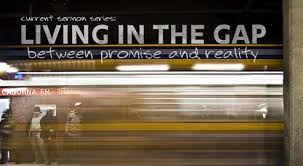 |
Are you tired of living in the reality gap? Where you are today is probably not where you want to be tomorrow. And tomorrow seems farther away from today than it has ever been. It’s called the reality gap. You would like to get out of it if you just knew how. The Trajexion Conference can get you started. Let’s talk.
God has placed today’s church in the middle of a chaotic environment. Many of us are going crazy figuring out what’s happening. We’re not sure how to effectively evangelize the world, we are uncomfortable with relating to new generations, and we stumble over the present trying to keep our past relevant. Statistics tell us that we’re not doing a good job at any of it. Giving up is not an option, but taking the next step involves pain. The truth will set you free, but it will probably hurt you first! Brace yourself for a candid look at our attempts, our conventions, and ourselves.
Given the present pace of evangelism, we are not only years behind, but catching up may soon be out of reach. The number of souls we touch, compared to the number of souls now live on the planet—a number increasing exponentially with the current population trends—means that our methods are almost totally ineffective. We’re stuck in the gap. Obviously, if we continue in what we are doing, we will never get where we want to go. Either we adjust our goals to account for factors beyond our control, or we resign ourselves to failure. In terms of people and dollars, we’re hardly scratching the surface. Can we solve our problem by simply pushing for greater sacrifice, greater giving, and greater efforts to take the gospel to the whole world? Or, should we make major, even radical changes in our methods to match our efforts to our rhetoric?
The Vision Gap. Spiritual, financial and logistical obstacles stand in our way, but other barriers prevent us from reaching a worldwide level of evangelization as well. The greatest obstacle—the proverbial elephant in the room—is stubbornly clinging to a vision that no longer squares with reality. Pastors and churches need to analyze the gap between what they want to do and what they’re really doing. When the vision target moves, the method of alignment—the aiming mechanics—must move with it. Our problems are not peripheral, but systemic.
The Demographic Gap. The church faces major demographic changes in ethnicity and rural/urban challenges of the new millennium. The Pew Research Center says, “Americans are more racially and ethnically diverse than in the past, and the U.S. is projected to be even more diverse in the coming decades. By 2055, the U.S. will not have a single racial or ethnic majority. Much of this change has been (and will be) driven by immigration. Nearly 59 million immigrants have arrived in the U.S. in the past 50 years, mostly from Latin America and Asia. Today, a near-record 14% of the country’s population is foreign born compared with just 5% in 1965. Over the next five decades, the majority of U.S. population growth is projected to be linked to new Asian and Hispanic immigration. American attitudes about immigration and diversity are supportive of these changes for the most part. More Americans say immigrants strengthen the country than say they burden it, and most say the U.S.’s increasing ethnic diversity makes it a better place to live. (www.pewresearch.org).
Pew Research also projects other demographic changes that will continue to impact American culture.
- Asia has replaced Latin America as the biggest source of new immigrants to the USA.
- America’s demographic changes are shifting the electorate—and American politics.
- Millennials, or those born after 1980, are the new generation to watch.
- Women’s role in the labor force and politics has grown dramatically.
- The American family is changing.
- The share of Americans who live in middle class households is shrinking.
- The U. S. population of Christians is declining and adults not involved in any religion is growing.
- The world’s religious makeup will look a lot different by 2050.
- The world is aging.
The Generation Gap. The laser speed of technological change has driven a deep wedge between people of certain ages. Change from the printing press to the automobile spread out over 500 years, but from the moon landing to the present took less than fifty. Experts project the next fifty years will make the society of 2067 almost unrecognizable. These innovations have already radically impacted present generations as witnessed in the rise of the Millennial Generation and Generation Z. The traits of these emerging age groups make present methods of evangelism as useless as butter churns or potbelly stoves.
The Socioeconomic Gap. Education levels and two-income households have brought about fundamental shifts in our culture. The sexual revolution, the composition of the average family, the immigration explosion, the growth of entitlements, the illegal drug epidemic and many other changes challenge every facet of the church’s mission in the world. We need to rip up the strategies of the past and start over.
So, why Trajexion? It should be clear that we need to move on from outdated strategies and address new and residual barriers to growth. No one person has the answer, but together, with the help of God, we can find our way forward. Church congregations need to be strengthened. New congregations need to be planted. Fresh vision needs to be cast. Rhetoric won’t work. Dreaming leads nowhere. We have to actually do something. That’s why.